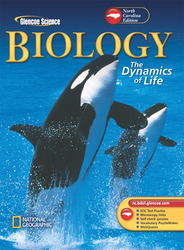1 <a onClick="window.open('/olcweb/cgi/pluginpop.cgi?it=gif::::/sites/dl/free/0078675642/181859/Ch29_0_a.gif','popWin', 'width=NaN,height=NaN,resizable,scrollbars');" href="#"><img valign="absmiddle" height="16" width="16" border="0" src="/olcweb/styles/shared/linkicons/image.gif"> (3.0K)</a> A) A B) D C) C D) B 2 A) ampulla B) pedicellariae C) tube feet D) madreporite 3 A) sand dollar B) sea squirt C) seastar D) lancelet 4 A) in the larval stage B) in both larval and adult stages C) They are sessile during all stages of life. D) in the adult stage 5 <a onClick="window.open('/olcweb/cgi/pluginpop.cgi?it=gif::::/sites/dl/free/0078675642/181859/Ch29_0_c.gif','popWin', 'width=NaN,height=NaN,resizable,scrollbars');" href="#"><img valign="absmiddle" height="16" width="16" border="0" src="/olcweb/styles/shared/linkicons/image.gif"> (5.0K)</a> A) within the tunic B) along the heart and circulatory system C) it disappeared after the larval stage D) surrounding the pharynx 6 A) eyespots B) sieve in the madreporite C) endoskeleton D) suction in the tube feet 7 <a onClick="window.open('/olcweb/cgi/pluginpop.cgi?it=gif::::/sites/dl/free/0078675642/181859/Ch29_0_c.gif','popWin', 'width=NaN,height=NaN,resizable,scrollbars');" href="#"><img valign="absmiddle" height="16" width="16" border="0" src="/olcweb/styles/shared/linkicons/image.gif"> (5.0K)</a> A) anus B) ciliated grooves C) gill slits D) heart 8 <a onClick="window.open('/olcweb/cgi/pluginpop.cgi?it=gif::::/sites/dl/free/0078675642/181859/Ch29_0_b.gif','popWin', 'width=NaN,height=NaN,resizable,scrollbars');" href="#"><img valign="absmiddle" height="16" width="16" border="0" src="/olcweb/styles/shared/linkicons/image.gif"> (3.0K)</a> A) D B) B C) A D) C 9 A) radial B) horizontal C) bilateral D) regional 10 <a onClick="window.open('/olcweb/cgi/pluginpop.cgi?it=gif::::/sites/dl/free/0078675642/181859/Ch29_0_a.gif','popWin', 'width=NaN,height=NaN,resizable,scrollbars');" href="#"><img valign="absmiddle" height="16" width="16" border="0" src="/olcweb/styles/shared/linkicons/image.gif"> (3.0K)</a> A) ectoderm B) mesoderm C) exoderm D) endoderm







